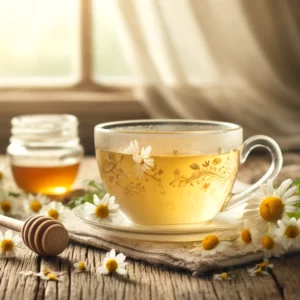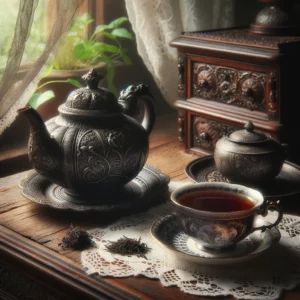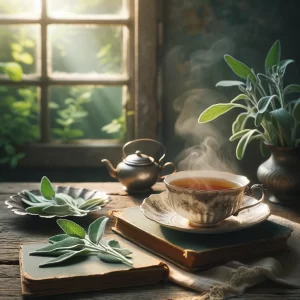The Ultimate Guide to Caffeinated Matcha Tea: A Vibrant Energy Boost
Welcome to our journey through the world of caffeinated Matcha Tea! This guide is your ticket to understanding everything about this unique and vibrant tea that’s been gaining popularity worldwide. Matcha isn’t just a tea; it’s an experience. With its rich history, unique preparation methods, and versatile usage, Matcha offers a fascinating glimpse into traditional Japanese culture, while providing a modern twist for tea lovers everywhere. Whether you’re a Matcha novice or a seasoned enthusiast looking to deepen your knowledge, this guide has something for everyone. Let’s dive into the green wonder that is Matcha Tea!
Table of Contents
- Introduction to Caffeinated Matcha Tea
- The Rich History of Matcha
- What Makes Matcha Special?
- Brewing the Perfect Cup of Matcha
- Creative Ways to Enjoy Matcha
- Pairing Matcha with Foods
- Sourcing and Storing Matcha
- Matcha’s Cultivation and Processing
- Conclusion: The Timeless Appeal of Matcha
- Try Caffeinated Matcha Tea
Introduction to Caffeinated Matcha Tea
What Is Matcha? Matcha is a special kind of green tea made by grinding young tea leaves into a bright green powder. Unlike traditional tea, where the leaves are infused in water, Matcha involves whisking the powder with hot water, which means you’re actually drinking the leaves. This unique process gives Matcha its distinct flavor and a gentle, sustained energy boost without the jitters often associated with coffee.
Caffeine Content: Matcha is known for its caffeinated kick, but it’s not just about the buzz. The caffeine in Matcha is released slowly into your body, providing a steady source of energy. This makes it a perfect drink for anyone looking for a long-lasting focus and alertness.
The Rich History of Matcha
Origins in Japan: Matcha’s journey began over a thousand years ago in Japan, where it was first used by Buddhist monks to stay awake during long meditation sessions. It has since become a cornerstone of Japanese culture, especially within the traditional tea ceremony, which is a ritual of preparation and presentation.
Ceremonial Importance: The Japanese tea ceremony, known as Chanoyu, centers around the preparation, serving, and consumption of Matcha. This ceremony is not just about drinking tea but is a spiritual and philosophical experience that embodies harmony, respect, purity, and tranquility.
What Makes Matcha Special?
Unique Growing Process: A few weeks before the tea leaves are harvested, the tea plants are covered to shield them from direct sunlight. This increases chlorophyll production, boosting the green color and enhancing the amino acids, which contribute to Matcha’s unique taste.
A Fine Powder: After harvesting, the leaves are carefully steamed, dried, and then stone-ground into a very fine powder. This meticulous process ensures that Matcha retains its nutritional value and rich, umami flavor profile.
Brewing the Perfect Cup of Matcha
Essential Tools: To brew Matcha, you’ll need a few key items: a bamboo whisk (chasen), a tea bowl (chawan), and a tea spoon (chashaku). These traditional tools help in creating a smooth and frothy consistency.
Step-by-Step Guide: Brewing Matcha is simple but requires attention to detail.
- Warm your bowl with hot water, then dry.
- Use the chashaku to scoop 1-2 teaspoons of Matcha powder into the bowl.
- Add about 2oz of hot water (not boiling) to the bowl.
- Whisk vigorously in a zigzag motion until the tea is frothy.
- Enjoy immediately.
Creative Ways to Enjoy Matcha
Beyond the Tea Cup: Matcha is incredibly versatile. Here are some fun ways to enjoy it:
- Matcha Latte: A creamy alternative to your morning coffee.
- Smoothies: For a refreshing and energizing drink.
- Matcha-Infused Desserts: Cookies, cakes, and ice creams can all be enhanced with a touch of Matcha.
DIY Matcha Moments: Experimenting with Matcha in your kitchen can be a fun way to discover new flavors and recipes. Whether it’s a Matcha pancake for breakfast or a Matcha smoothie for an afternoon pick-me-up, the possibilities are endless.
Pairing Matcha with Foods
Sweet and Savory Combinations: The unique flavor of Matcha pairs well with both sweet and savory dishes. Try it with:
- Sweets: Chocolate, vanilla, or citrus flavors complement Matcha’s earthiness.
- Savory: Seafood, rice dishes, or even salads can be elevated with a sprinkle of Matcha.
Breakfast and Beyond: Start your day with a Matcha twist by adding it to your oatmeal, yogurt, or toast spreads. Matcha’s versatility makes it a fantastic ingredient to play with in various meals.
Sourcing and Storing Matcha
Finding Quality Matcha: When shopping for Matcha, look for a vibrant green color, which indicates its freshness and quality. It’s also a good idea to choose Matcha that comes from Japan, as this is where the best Matcha is produced.
Storage Tips: To keep your Matcha fresh, store it in an airtight container and keep it in a cool, dark place. Avoid exposure to air, light, and heat to preserve its color and flavor.
Matcha’s Cultivation and Processing
From Leaf to Powder: The care taken during Matcha’s cultivation and processing is what sets it apart. The shading technique enhances its flavor and color, while the slow grinding preserves its delicate qualities.
Quality Differences: There are two main grades of Matcha: ceremonial and culinary. Ceremonial grade is made from the youngest tea leaves and is best enjoyed on its own. Culinary grade is used for cooking and baking and has a stronger flavor.
Conclusion: The Timeless Appeal of Matcha
Matcha is more than just a tea; it’s a versatile ingredient, a cultural icon, and a source of sustained energy. Its unique preparation and rich history invite us to slow down and savor the moment, whether we’re enjoying a traditional cup or experimenting with Matcha-infused recipes. We encourage you to explore the vibrant world of Matcha Tea and discover your favorite ways to enjoy its timeless appeal. Happy sipping!
Try Caffeinated Matcha Tea
“As an Amazon Associate I earn from qualifying purchases.”
[azonpress template=”grid” asin=”B0BPH4GDMW,B0CKSYXCVR,B001B2SVOS,B01CK2J600,B07TD9CS4J,B00PFDH0IC”]



